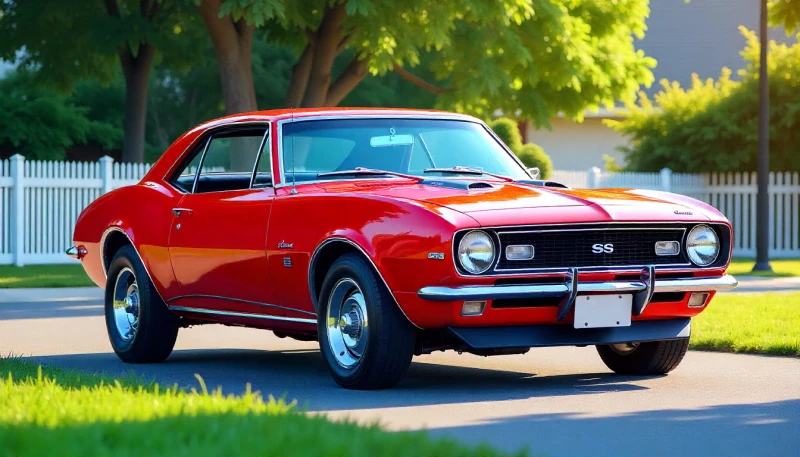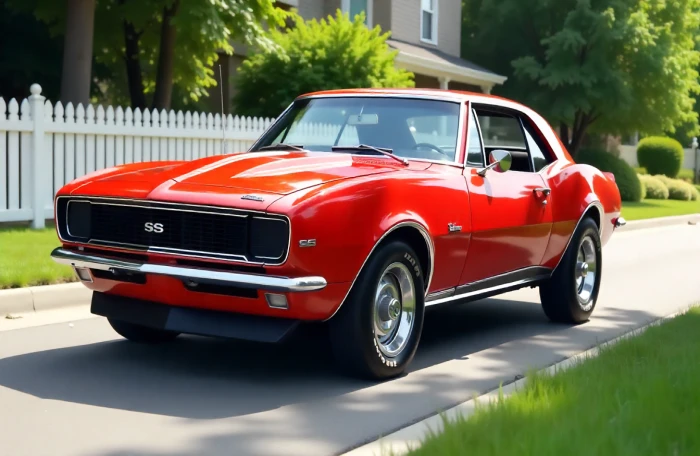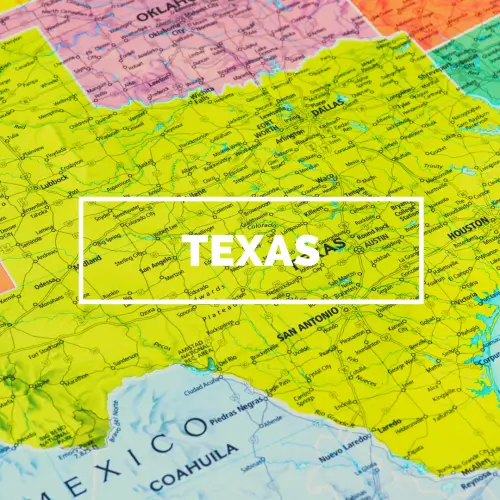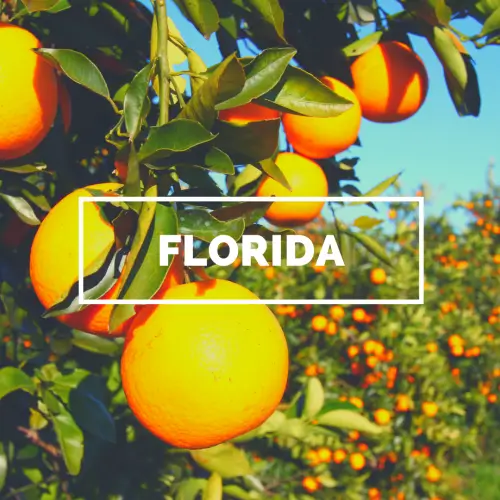Chevy cars in the 1960s helped define what many now call the golden age of American muscle. These machines brought real power, bold design, and performance that turned heads on the street and the track.
In 1965 alone, Chevrolet sold more than 1 million Impalas. This was more than any other car in U.S. history at the time. That wasn’t just a big number; it marked a shift in what people expected from a car. Drivers wanted more than space and reliability. They wanted speed, control, and something that stood out in a crowd.
Early in the decade, Chevy focused on full-size models like the Impala and Bel Air. These cars were built for families and long highway drives. But as the decade picked up steam, so did a new kind of buyer. Younger drivers started asking for something different. Chevy answered with muscle. Strong engines, sharper handling, and a style that matched the changing mood of the country.
That shift led to one of the most exciting stretches in the brand's history. Chevy introduced models like the Chevelle SS, Camaro, Corvette Stingray, and Nova. Some were stripped down and fast. Others packed comfort and high-end looks into mid-size frames. All of them delivered on performance and helped fuel a rivalry with the Ford Mustang that shaped an entire era.
Some of these cars were built for drag strips. Others were daily drivers with real attitude. Whether you were behind the wheel of a coupe, convertible, or four-door with a tuned V8, the 1960s gave you something that felt alive.
What You’ll Learn
Which classic Chevy cars made the biggest impact and why they still matter today
How the lineup changed throughout the decade to meet a faster, younger market
What to know if you're planning to ship or preserve one of these cars properly
Overview

This article explores the evolution and impact of 1960s Chevy cars, focusing on how they became American muscle legends and highlighting key models and features. The information most relevant will depend on whether one is interested in history, collecting, or shipping these classic vehicles.
Here's a more detailed breakdown:
Early 1960s Chevy Focus
This period featured full-size sedans like the Impala and Bel Air, emphasizing family-friendly features and affordability.
Shift to Muscle Cars
As demand shifted, Chevy introduced powerful models like the Chevelle SS, Camaro, and Nova, catering to younger drivers seeking speed and style.
Iconic 1960s Models
This section highlights the most legendary cars of the era, such as the Impala, Corvette Sting Ray, Biscayne, Camaro, and Chevelle SS 396, detailing their specific attributes and impact.
Performance and Design Improvements
Chevy enhanced its vehicles with more powerful engines, improved suspension and handling, and more aggressive styling during the 1960s.
Why Classic Chevys Retain Value
These cars hold value due to their timeless design, powerful engines, parts availability, auction interest, and driving experience.
Shipping Classic Chevy Cars
AmeriFreight Car Shipping offers transport options for vintage vehicles, including advice on open or enclosed transport.
Other Notable Aspects
Frequently Asked Questions
The document addresses common queries about specific Chevy models produced in various years of the 1960s.
Chevy in the 1960s: A Decade of Transformation
Chevy started the 1960s focused on comfort, size, and affordability. But the brand didn’t stay in that lane for long. As American car culture shifted toward performance, Chevy adapted fast and helped lead the way.
What Chevy Focused on Early in the Decade:
Full-size sedans like the Impala and Bel Air
Family-friendly features such as big trunks, soft rides, roomy cabins
Value-focused pricing that appealed to middle-class buyers
These models were reliable and widely sold, but the market was changing. A younger generation of drivers was more interested in speed and bold styling than rear seat space.
What Changed the Direction:
The rise of muscle cars led by public demand for faster vehicles
Growing competition from rivals like the Ford Mustang and Pontiac GTO
New interest in racing and drag strips especially among younger buyers
Chevy answered the call with smaller, lighter, more powerful models. The brand introduced:
The Chevelle SS 396 known for big-block torque in a mid-size body
The Chevy Nova SS a low-priced option with serious power
The first-generation Camaro aimed squarely at the Mustang’s market
Multiple coupe and convertible body styles built for style and speed
Chevy didn’t just change engines. The cars themselves became wider, lower, and more aggressive. Suspension systems improved. Trim options got sportier. Buyers could pick from a full range of price points, styles, and performance levels.
By the end of the 1960s, Chevy wasn’t just building transportation. It was building muscle cars with real presence: vehicles that could compete with the best on the street or the track.
The Icons: Most Legendary 1960s Chevy Cars
Chevy didn’t just follow the muscle car trend in the 1960s. It helped shape it. The decade produced a lineup of standout models that left a lasting mark on American car culture. Each one brought something different to the road, whether it was horsepower, style, or affordability.
1960 Chevrolet Impala
One of the most popular full-size sedans of the era
Known for its wide body, signature tailfins, and available V8 engines
Offered in multiple body styles including coupe, convertible, and four-door
Helped define the early part of the decade before the muscle car wave took over
1963 Corvette Sting Ray
A major leap forward in both design and handling
First year to feature independent rear suspension
Introduced the split rear window in the coupe, now a collector favorite
Packed with small-block and big-block engine options
Still considered one of the most balanced sports cars of its time
1965 Chevy Biscayne
A budget-friendly full-size car that often came equipped with V8 power
Simple design with minimal trim, which made it lighter and quicker
Popular choice for drivers who wanted performance without flash
Sometimes called a “sleeper” because of its low-profile appearance and strong engine options
1967 Chevrolet Camaro
Introduced as a direct response to the Ford Mustang
Launched the start of Chevy’s pony car legacy
Available with SS and RS performance packages
Offered with a wide range of V8s, including the 396 cubic inch engine
Helped establish a new category of compact, aggressive street cars
1969 Chevelle SS 396
One of the most iconic muscle cars of the decade
Powered by a 396 cubic inch big-block V8
Available as a coupe or convertible with bold styling and strong acceleration
A top pick for drag racing and performance builds
Represented the peak of Chevy’s mid-size muscle offerings before the 1970s oil crisis changed priorities
Honorable Mentions:
Chevy Nova SS – A small, lightweight option with big performance potential
Chevrolet Corvair – Rear-engine design and unique handling, though controversial
Bel Air – Continued through the 1960s as a low-priced, full-size option
Chevelle Malibu – Later evolved into its own standout nameplate
Monte Carlo – Though it launched in 1970, development started in the late ‘60s
How Chevy Improved Performance and Design in the 1960s
Chevy’s success in the 1960s wasn’t only about looks. Under the hood and beneath the surface, the brand was pushing performance, testing new ideas, and giving drivers more control, speed, and power. This decade became a test bench for what muscle cars could do.
Engines That Defined the Decade
Chevy offered a wide range of engine options. These weren’t built for show; they were made for torque, track use, and real-world street speed.
Small-block V8s like the 283, 327, and 350 cubic inch became performance staples
Big-block V8s like the 396 and 427 delivered serious horsepower, often used in the SS packages
Some first-generation engines were built for both daily driving and quarter-mile runs
Models like the Chevelle SS 396 and Camaro Z/28 could produce more than 375 horsepower in stock form
These powerful engines made mid-size cars feel fast without sacrificing control. That mix of size and speed became a core part of what defined a true Chevy muscle car.
Suspension, Handling, and Braking Upgrades
By the mid-1960s, Chevy was refining how these cars felt on the road.
Independent rear suspension was introduced in the 1963 Corvette Sting Ray
Wider wheelbases and better weight balance helped with grip and cornering
Disc brakes became more common on higher-performance models
Tire and axle improvements allowed for better launches and smoother high-speed control
These upgrades gave drivers more confidence—not just in a straight line, but also on winding roads and short tracks.
Design That Matched the Power
Muscle cars weren't only about engines. Chevy also reshaped how these vehicles looked and felt.
Cars became lower, wider, and more aggressive
Fastback rooflines and bold grilles added edge to popular models
The vinyl roof trend added a premium touch to mid- and full-size cars
Stripes, badging, and SS or RS trims created clear performance signals
Chevy offered body styles that matched different needs: sedans, convertibles, coupes, and wagons
Buyers could choose the size, style, and trim that fit their budget and driving goals. Whether it was a Nova with a 327 or a Corvette with a 427, you were getting speed and style that felt ahead of its time.
Why Classic Chevy Cars Still Hold Value Today
The 1960s are long gone, but the value of classic Chevy cars from that decade continues to rise. Collectors, restorers, and fans still chase these models not only for their looks or performance, but for what they represent. These were cars that delivered real power, reflected the mood of a generation, and offered drivers something they could feel proud to own.
What Keeps Demand Strong
There’s more than nostalgia behind the demand for 1960s Chevy muscle cars. They continue to stand out because of:
Timeless design that feels unique even decades later
Powerful engines that still compete with modern performance specs
Wide parts availability, especially for popular models like the Camaro and Chevelle
Strong auction interest across the U.S. and in international markets
Proven market appreciation, with values increasing year over year for rare models
Some vehicles, like the 1967 Chevrolet Camaro Z/28 or the 1969 Chevelle SS 396, have seen consistent growth at collector auctions. Others, like the Biscayne or early Nova SS, remain affordable entry points into the classic car market.
Restorability and Driving Experience
Many classic Chevy cars from the 1960s are still running today. That’s partly because they were built as simple, strong, and meant to be serviced vehicles. Whether it’s the first-generation Corvette Sting Ray or a four-door Impala, these vehicles were designed with mechanical access in mind.
Drivers also enjoy them on the road. You don’t need track-ready tuning to feel the response of a small-block V8 or hear the rumble of a dual exhaust. Even with lower fuel efficiency and older brakes, these cars offer a more connected driving experience than many modern vehicles.
Final Thoughts
Classic Chevys often become family projects, show cars, or weekend cruisers. They also appear in movies, ads, and museums, reinforcing their place in American history. These cars carry stories—not just specs. That legacy keeps them popular across generations.
How to Ship a 1960s Chevy With AmeriFreight Car Shipping
If you plan to transport a classic 1960s Chevy, AmeriFreight Car Shipping connects you with trusted carriers who handle vintage vehicles carefully. Our customer service agents help select the best transport option—open or enclosed—based on the car's condition, value, and your preferences. To see how classic car shipping works, explore our guide on protecting long-term value with classic car shippers.
Frequently Asked Questions
What cars did Chevy make in 1960?
Chevy’s 1960 lineup included the Impala, Bel Air, Biscayne, Nomad, Corvette, and Corvair.
What cars did Chevy make in 1965?
In 1965, Chevy offered the Impala, Bel Air, Biscayne, Corvette, Corvair, Chevelle, and Chevy II/Nova.
What car did Chevy come out with in 1968?
Chevy introduced the Monte Carlo concept in development and continued the Camaro, Chevelle, Corvette, Impala, and Nova.
What cars did Chevy make in 1963?
The 1963 lineup included the Impala, Bel Air, Biscayne, Chevy II/Nova, Corvette Sting Ray, and Corvair.




















